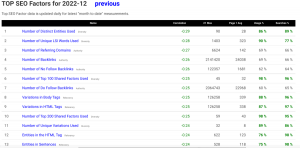For founders of startups, or soon-to-be founders of startups, the thing that is the most challenging, stressful, worrisome, exhausting, frustrating, bothersome, and any other adjective that can keep you up the most at night probably isn’t the quality of your product, service, distribution, or even accounting…it’s your competitors.
That’s because out of all the factors listed above, it’s only your competitors that have a vested interest in seeing you fail.
The best way to defeat your competitors that are already established in the market while also expanding your brand — is to stand out. There’s plenty of marketing strategies that can be utilized to ensure that a brand gets noticed, especially those that include huge ad spend. However, I’ve discovered that when it comes to startups, there are unique strategies and tactics that should be applied that aren’t required by established brands. Here’s a few tactics that you can apply to your marketing arsenal in order to get your startup noticed by your target audience.
Amplify your differences
When starting your business, the very first thing you should do is identify what makes your brand different from all the of other brands that currently exist in the market. Once you identify that difference, embrace it, shout it, use it as your brand’s war cry in the battlefield known as the marketplace.
Marketers often refer to this difference as your UVP (unique value proposition) or your USP (unique selling proposition), but I like to refer to this as the DPE (differentiating point of emphasis). That’s because initially, your difference must be emphasized in every point of your marketing materials.
As the founder of a startup, it’s vital that your DPE be in your slogan/tagline. On your business cards. On your website. And on all of your initial advertisements. This will instantly inform your audience that you’re not offering the same old thing that’s already out there. But what you are offering is something that’s fresh, first, and fantastic.
Present a brand face
What’s the first thing that you think of when you hear the names Tony The Tiger, Ronald McDonald, and Jake from State Farm? Let me guess; it’s probably Frosted Flakes, hamburgers, and insurance…am I right?
That’s because all of those characters are brand faces. Brand faces are the face of a brand that allows consumers to instantly recall the brand whenever they see or hear from them. Brand faces are like cheat codes to branding. They’re the organic constant that can increase brand awareness exponentially.
Growing up in the Bay Area, I seen a slew of commercials that aired locally featuring a guy named ‘Paul from the Diamond Center’. Paul was probably featured in every single commercial for the jewelry store Diamond Center that I’ve ever seen. Paul became a celebrity in Northern California, but better yet – he became the face of the brand. Even if a television commercial was on mute, people knew it was a commercial for the Diamond Center as soon as they saw Paul appear on their TV screen. That’s the power of a brand face.
As a founder, you can be the brand face like Paul from the Diamond Center or you can create one like Ray Kroc did with Ronald McDonald…or you can have multiple brand faces like Dave Thomas did when he decided to be in commercials along with his daughter to craft the Wendy’s image. If you choose to use a brand face for your brand, be consistent and keep the brand face attached to all aspects of your marketing.
Align your brand with your MVA
Okay, so you’ve amplified your brand’s differences. You even created a brand face. Now comes the fun part – combining both of those tactics with what author/marketing guru Seth Godin calls your MVA (minimum viable audience).
Your MVA are the people that will be the most receptive of your brand initially. They’re your early adopters. The smallest possible audience that can help sustain your brand. In other words, they’re the lifeblood of your business initially and will determine your brand’s speed-of-scale.
Aligning your brand with a MVA is paramount for a startup. The way to do this is by finding out where your MVA is located and presenting them with your creation wherever they are. To find your MVA, start by creating a consumer profile that describes the characteristics and lifestyle of your average consumer. Once you do that, you can locate them and pitch your product.
Here’s an example of how to put all of these steps together: Let’s say James (the most common name in America) started a tasty plant-based breakfast cereal brand and named it Pro-Dominant. Pro-Dominant’s DPE is that it provides twice as much protein as the leading protein packed cereal on the market.
James creates a brand face for Pro-Dominant named Gym Protein; a muscle-bound jock that’s only interested in consuming the best protein breakfast cereal – and working out every day. James does his homework and realizes that his MVA will consist of 25 to 40-year-old vegans that work out at least four days a week and typically live in large metropolitan areas.
James can now locate his MVA and advertise to them via paid Facebook ads and search engine marketing directed at those who live that lifestyle while utilizing key words used by this MVA…all the while putting Gym Protein front and center in every ad to maximize brand recall.
This would create a following for Pro-Dominant by the people who were waiting for a brand like this to come along. And they would tell others about the new brand they discovered and that crazy Gym Protein character.
Conclusion
From a creative standpoint, there’s a lot that goes into getting your startup brand to be noticed by your target audience. The steps listed above are a few that have been very effective for me and all the teams I’ve worked with over the years when applied correctly.
The most important thing you can do to get your brand noticed is to connect with the right audience emotionally and help them solve a problem that they may not have even known existed.
If you can do that in conjunction with the steps above, your brand will not only be noticed – it’ll be embraced by those that you seek to serve.
Originally published here.
Image: Mikhail Niolv via Pexels.com
Business & Finance Articles on Business 2 Community
(19)






